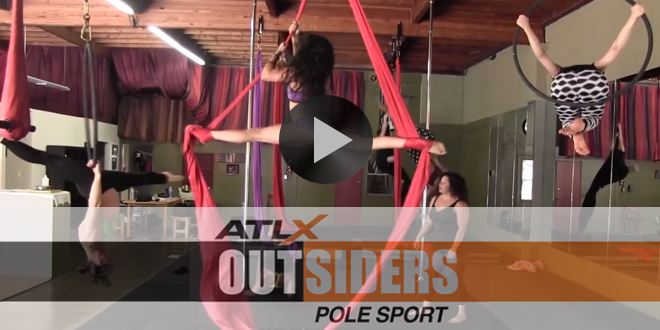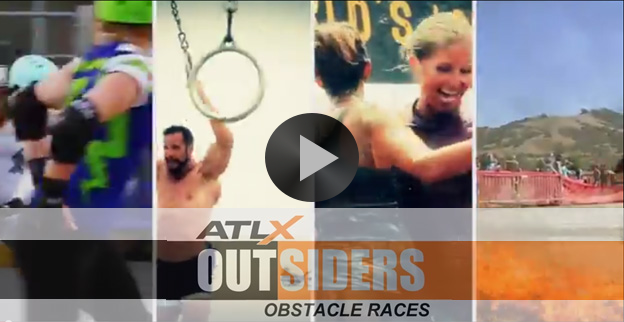By: Aaron Fischman
Dumbbells can be found in virtually every gym. While they’re easily accessible and obviously effective for weight training, they have significant limitations. As you may have noticed, dumbbells can be awkward to lift and present possible danger to you and your environment if you’re lifting too heavy or aren’t as careful as you should be.
The SandBell, a circular sandbag filled with sand, was developed and brought to market by Hyperwear in 2008 to solve these problems.
“What truly makes it unique from a functional perspective – obviously, it’s incredibly versatile so you can do anything under the sun with it – but it’s totally safe for the user and the environment,” said Hyperwear CEO Denver Fredenburg.
Jim Liston was inspired by kids to create this product. As founder and president of CATZ, a youth athletic performance center, he hoped to create a particularly child-friendly alternative to dumbbells.
“He wanted to develop some sort of tool, where it was weight but it could also be thrown around,” added Fredenburg. “And totally safe because kids obviously are new to techniques and form.”
The SandBell has come full circle since then. Just five years after it was released, it has already partnered with three of the 10 biggest school districts in the country, including Los Angeles, Miami-Dade and Dallas.
From a psychological perspective, the SandBells have been effective in demonstrating to the children the fun in working out, according to Fredenburg: “They think they’re toys, because they’re colorful and they love to play around with them.”
Unlike most other weighted products, the SandBell can be sold with or without the weight inside. Specifically, Hyperwear can ship empty or filled versions of the SandBell. This quality makes delivery much easier and more efficient for both parties. Also, thanks to the SandBell’s makeup, it’s easily transportable, unlike bulkier, more dangerous equipment, such as dumbbells.
The product’s simple and safe properties also enable a beginner to train with it before moving on to heavier weight. Take kettebells, for example: “We have found that the kettlebell enthusiasts will bring SandBells in,” said Fredenburg, “and bring their beginning customers that haven’t mastered the techniques and maybe aren’t quite ready to throw 30 or 40 pounds up over their head.”
The SandBell can emulate the very same movements as those of a kettlebell, but has the advantage of being much safer.
If a beginner drops the SandBell on his or her foot or runs into one on the ground, it won’t hurt. If the same thing happened with a kettlebell, that would be a whole different story.
It’s such a simple product. Incredibly simple, in fact, which poses a central challenge: How do you market it?
Well, just because something is simple to assemble and use doesn’t mean it doesn’t boast a slew of useful functions. And that’s exactly what Hyperwear argues. “We need to say, ‘Hey, here’s a real simple tool, but look at all the stuff you can do with it,’” said Fredenburg.
Because of the product’s versatility, K-12 P.E. teachers, college and pro strength and conditioning coaches and personal trainers, alike, can do what they do best and get creative with moves.
The “full-body slam,” is the SandBell’s “signature move,” according to Fredenburg. It involves grabbing the product from between your feet, lifting it above your head and then slamming it down. It engages all parts of the body and, frankly, sounds like a lot of fun.
If you need to release some pent-up anger, the exercise may help, and again, from a safety standpoint, if you threw a dumbbell like that, it probably wouldn’t end well. Even if you managed to avoid hitting a mirror, injuring a fellow gym patron or damaging the floor, you’d probably never be allowed back in your gym. With the SandBell, you can throw it all you want without fear of such consequences.
Hyperwear has since launched the SteelBell, which is made of steel as the name suggests. As a result, it’s heavier and denser than the SandBell. It goes up to 200 pounds, while the SandBell tops out at 50. And before the SteelBell came along, Hyper Vest weight vests were introduced alongside the SandBell.
Fredenburg, who has run about 10 ultramarathons, practices what he preaches and uses all three as part of his training.
In training for the Leadville Trail 100 Run (a 100-mile ultramarathon through the heart of the Rocky Mountains), Fredenburg said he “used a lot of SandBell and heavy SteelBells out in our weight room here, and it’s about keeping the full range of motion and flexibility.” He wore a weight vest during many “shorter recovery runs,” too.
Whether you’re training for an ultramarathon or simply beginning to learn how to weight-train in school, these newly developed tools can help you accomplish your goals. Make no mistake: There’s no substitute for hard work, but these devices can certainly help you train more safely and efficiently.
For more information, visit Hyperwear’s website here
 ATLX The only sports entertainment television and digital media network fully devoted to everyday athletes, athletic lifestyle and athletic culture.
ATLX The only sports entertainment television and digital media network fully devoted to everyday athletes, athletic lifestyle and athletic culture.




